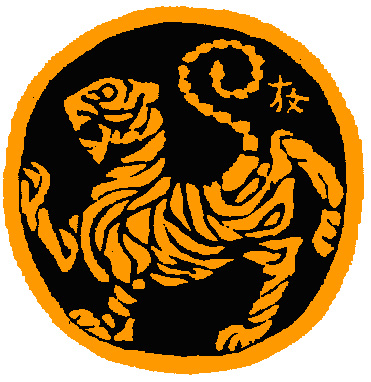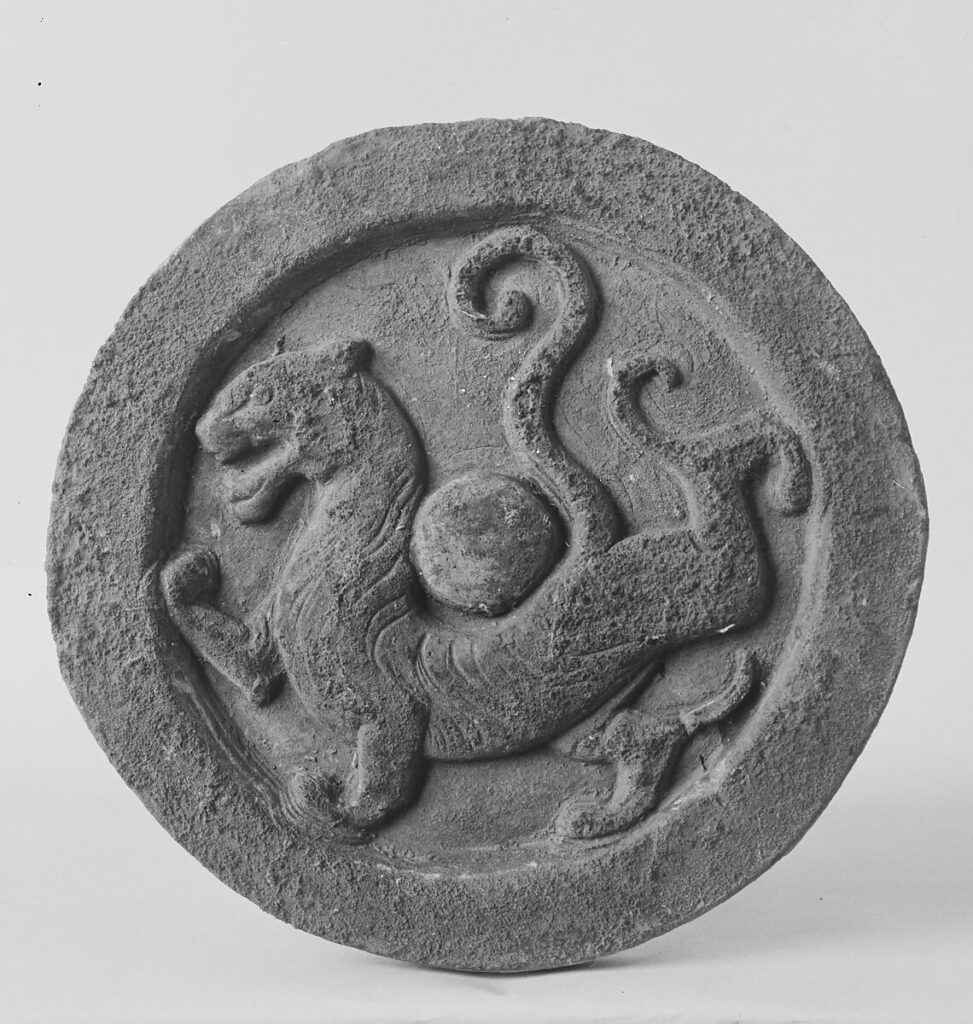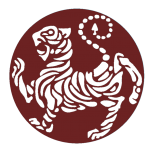
Hoan Kosugi, a famous artist in Japan, along with Jigoro Kano, was the most influential person in encouraging Funakoshi to teach in Japan in 1922. As part of his enticement of Funakoshi, Hoan Kosugi told Funakoshi that if he wrote a book about karate, he, Kosugi, would design it and provide a painting for its cover. When Funakoshi produced the book, Kosugi produced the now famous Shotokan tiger.
Kosugi’s idea for the tiger came from the expression “Tora no maki” which, in Japanese tradition, is the official written document of an art or system, used as the definitive source for the particular art. Since no books had ever been written about karate, Hoan Kosugi told Funakoshi that his book was the tora no maki of karate. Since tora is also the pronunciation of the kanji for tiger, he designed the tiger in a clever play on words, as a representation of Funakoshi’s art.

In ancient Chinese cosmology, the tiger symbolises the western quadrant of the four cardinal directions. The animal was depicted on molded bricks, roof tiles, and walls of buildings to protect the living, as well as on architectural parts of tomb chambers to guard the deceased in the afterlife. This tile is in the Metropolitan Museum of Art, New York and dates from the Western Han dynasty (206 BCE–9 CE)
There is such a close resemblance to the tigers depicted, it is plausible the maybe Kosugi was inspired by the Chinese philosophy of the White Tiger, one of the four Guardians. Symbolically, and as part of spiritual and religious belief and meaning, these creatures have been culturally important across countries in Asia.
I like to think that the fragmented nature of the way Kosugi designed the tiger’s stripes represents the various techniques, strategies, philosophy and principles that Shotokan karate comprises. Such that when all aspects of the art are studied, then those studies reinforce each other and constitute the whole.
Reference
Shotokan Karate – Its History and Evolution, Randall G Hassell, Empire Books, ISBN 978-1-933901-28-2
